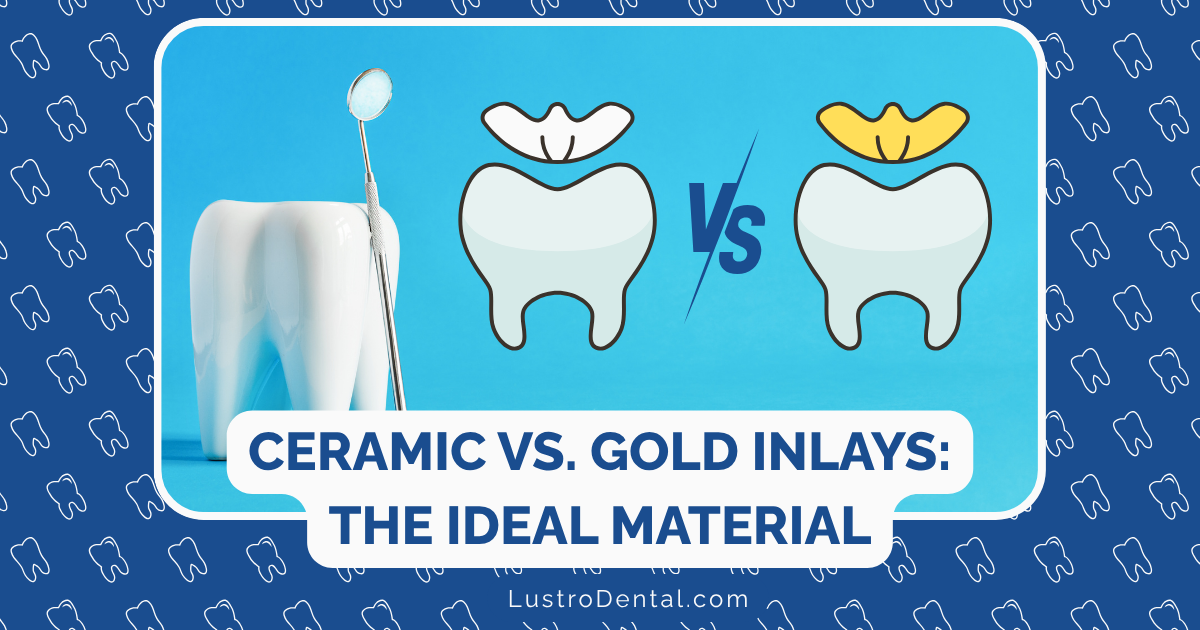Root Canals in 2025: Why They’re Nothing Like Your Parents’ Experience

Few dental procedures carry the same reputation for discomfort as the root canal. For generations, this treatment has been the punchline of jokes and the subject of dental anxiety. “I’d rather have a root canal than…” has long been shorthand for describing something truly unpleasant.
But if you’re holding onto these outdated perceptions in 2025, you’re missing a remarkable transformation. Modern root canal therapy bears little resemblance to the procedure your parents or grandparents might have endured. Today’s endodontic treatment leverages cutting-edge technology, advanced materials, and innovative techniques to create an experience that’s faster, more comfortable, and more effective than ever before.
As someone who’s passionate about helping people overcome dental anxiety, I’m excited to share how root canal therapy has evolved and why the procedure’s fearsome reputation is now thoroughly outdated.
The Evolution of Root Canal Therapy: Then vs. Now
To appreciate how far we’ve come, let’s briefly look at the history of root canal treatment:
Traditional Root Canals (Your Parents’ Experience)
In decades past, root canal therapy often involved:
- Limited diagnostic capabilities, relying primarily on 2D X-rays
- Manual filing of canals with stainless steel instruments
- Multiple lengthy appointments (often 2-3 visits of 90+ minutes each)
- Significant post-procedure discomfort
- Success rates around 80-85%
Dr. James Wilson, a retired endodontist who practiced from 1975-2010, recalls: “When I started my career, root canals were indeed challenging for both patient and practitioner. Our instruments were rigid, our visualization was limited, and the process was time-consuming. Patients had good reason to be anxious.”
Modern Root Canals in 2025
Today’s root canal experience is dramatically different:
- Advanced 3D imaging for precise diagnosis
- Computer-assisted instrumentation
- Single-visit treatment in many cases (typically 60-90 minutes)
- Minimal post-procedure discomfort
- Success rates exceeding 95%
According to the American Association of Endodontists, modern root canal therapy is “virtually painless” and comparable to receiving a routine filling in terms of patient comfort.
7 Game-Changing Technologies Transforming Root Canals in 2025
Let’s explore the innovations that have revolutionized this once-dreaded procedure:
1. 3D Cone Beam Computed Tomography (CBCT)
Perhaps no technology has transformed endodontics more than CBCT imaging. Unlike traditional 2D X-rays, CBCT provides detailed three-dimensional views of your tooth’s internal structure and surrounding anatomy.
How it improves your experience:
- Allows endodontists to see the exact number, shape, and position of canals
- Reveals hidden infections or complications before treatment begins
- Enables more conservative access to preserve tooth structure
- Reduces the risk of missed canals (a common cause of treatment failure)
Dr. Sarah Chen, an endodontist at the University of Michigan School of Dentistry, explains: “CBCT imaging is like giving endodontists superpowers. We can now see details that were previously invisible, allowing for more precise and predictable treatments.”
2. Dental Operating Microscopes
Modern endodontists routinely use specialized microscopes providing up to 25x magnification during procedures.
How it improves your experience:
- Allows visualization of minute details invisible to the naked eye
- Enables more thorough cleaning of complex canal systems
- Helps preserve maximum healthy tooth structure
- Improves identification and treatment of tiny fractures or additional canals
Research published in the Journal of Endodontics demonstrates that microscope use increases the detection of additional canals by up to 40%, significantly improving treatment outcomes.
3. Nickel-Titanium Rotary Instruments
Unlike the rigid stainless steel files of the past, today’s endodontic instruments are made from nickel-titanium alloy—a flexible, shape-memory material originally developed for NASA.
How it improves your experience:
- Follows the natural curve of canals without creating ledges or perforations
- Provides more thorough cleaning with less removal of tooth structure
- Significantly reduces treatment time
- Creates smoother canal walls for better sealing
“The difference between traditional stainless steel files and modern NiTi instruments is like comparing a wooden wagon to a Tesla,” notes Dr. Michael Rodriguez of the American Board of Endodontics. “They’ve completely transformed how we approach canal preparation.”
4. GentleWave® Procedure
This revolutionary system uses multisonic ultracleaning technology—combining fluid dynamics, acoustic energy, and advanced fluid management—to clean and disinfect even the most complex root canal systems.
How it improves your experience:
- Reaches areas traditional irrigation cannot access
- Provides superior cleaning and disinfection
- Preserves more tooth structure through minimally invasive access
- Often eliminates the need for multiple appointments
A clinical study published in the Journal of Endodontics found that 96.6% of patients who received GentleWave treatment reported no pain or only mild discomfort following the procedure.
5. Bioceramic Materials
Modern root canals utilize biocompatible ceramic materials that interact positively with human tissue.
How it improves your experience:
- Creates a superior seal to prevent reinfection
- Promotes healing of surrounding tissues
- Reduces post-operative sensitivity
- Strengthens the root structure
“Bioceramic materials represent one of the most significant advances in endodontic materials,” explains Dr. Lisa Johnson, researcher at the National Institute of Dental and Craniofacial Research. “Their biocompatibility and sealing properties have dramatically improved long-term outcomes.”
6. Artificial Intelligence and Robotics
The integration of AI and robotics in endodontics is no longer science fiction. In 2025, many practices utilize AI-assisted diagnosis and treatment planning.
How it improves your experience:
- AI algorithms help identify subtle signs of infection or anatomy variations
- Robotic-assisted access preparation ensures precise entry while preserving tooth structure
- Automated systems maintain optimal irrigation during procedures
- Digital guidance systems help navigate complex canal systems
According to research from the International Journal of Computerized Dentistry, AI-assisted endodontic diagnosis shows accuracy rates exceeding 95%, often identifying issues that human practitioners might miss.
7. Regenerative Endodontics
Perhaps most exciting is the field of regenerative endodontics, which aims to regrow damaged pulp tissue rather than simply removing and replacing it.
How it improves your experience:
- Preserves the tooth’s natural defense mechanisms
- Allows continued root development in immature teeth
- Maintains tooth vitality and sensory function
- Potentially stronger long-term outcomes
While still evolving, regenerative approaches have shown promising results, particularly for younger patients with incompletely formed roots.
The Modern Root Canal Experience: What to Actually Expect in 2025
If you need a root canal today, here’s what your experience will likely include:
Before Your Appointment
- Digital consultation: Many endodontists offer virtual pre-appointments to discuss your case, answer questions, and address concerns.
- Preparation guidance: You’ll receive clear instructions on medications and eating before your procedure.
- Insurance verification: Digital systems streamline insurance processing and provide transparency about costs.
During Your Appointment
- Comprehensive imaging: Advanced 3D scans provide a detailed map of your tooth’s anatomy.
- Profound anesthesia: Computer-controlled delivery systems ensure comfortable, complete numbing.
- Minimally invasive access: Small, precise openings preserve maximum tooth structure.
- Efficient canal preparation: Rotary instrumentation cleans and shapes canals in a fraction of the time required by manual methods.
- Advanced disinfection: Systems like GentleWave thoroughly clean areas traditional methods can’t reach.
- Biocompatible filling: Bioceramic materials seal the canal system to prevent reinfection.
- Same-day restoration: Many practices offer immediate placement of a permanent or semi-permanent restoration.
The entire procedure typically takes 60-90 minutes for a standard case, often completed in a single visit.
After Your Appointment
- Minimal discomfort: Most patients manage any mild discomfort with over-the-counter pain relievers, if needed at all.
- Rapid recovery: Normal activities can typically be resumed immediately.
- Digital monitoring: Some practices utilize smartphone apps for post-procedure monitoring and communication.
- High success rates: With modern techniques, success rates exceed 95% for most cases.
Myth vs. Reality: Addressing Common Misconceptions
Despite these advances, outdated perceptions persist. Let’s address some common myths:
Myth: “Root canals are extremely painful.”
Reality: Modern anesthetics ensure profound numbness during the procedure. A 2024 patient satisfaction survey found that 89% of patients who had root canal treatment reported it was “no more uncomfortable than having a filling.”
Myth: “Root canals require multiple lengthy appointments.”
Reality: Advances in instrumentation and imaging mean that most root canals can now be completed in a single visit of 60-90 minutes.
Myth: “Root canals often fail, requiring extraction anyway.”
Reality: The success rate for modern root canal therapy exceeds 95% when performed by specialists using current technology, according to the Journal of Endodontics.
Myth: “Root canals leave teeth dead and prone to fracture.”
Reality: While root canal-treated teeth no longer have a blood supply, modern techniques preserve structural integrity, and immediate restoration protects against fracture.
Who Performs Root Canals? General Dentists vs. Endodontists
While many general dentists perform root canals, endodontists are specialists who have completed:
- Four years of dental school
- An additional 2-3 years of specialized training
- Thousands of root canal procedures
Endodontists typically invest in the most advanced technologies and focus exclusively on root canal therapy and related procedures. For complex cases, seeking a specialist often provides the highest chance of success.
Dr. Robert Garcia of the American Association of Endodontists notes: “The relationship between general dentists and endodontists is collaborative. General dentists are excellent at identifying when a patient needs endodontic care, and endodontists focus exclusively on providing that specialized treatment.”
The Cost Factor: Investment vs. Value
Modern root canal therapy typically costs between $700-$1,500 for a front tooth and $900-$1,800 for a molar, depending on location and complexity. While this represents a significant investment, consider:
- Alternative costs: Extraction followed by implant replacement typically costs $3,000-$5,000 per tooth.
- Long-term value: A well-performed root canal can preserve your natural tooth for decades or even a lifetime.
- Insurance coverage: Most dental insurance plans provide some coverage for endodontic treatment.
As Dr. Lisa Wilson, an endodontic researcher, explains: “When we consider the biological value of preserving natural tooth structure and the long-term functional and aesthetic benefits, root canal therapy remains one of the most cost-effective dental interventions available.”
The Future of Root Canal Therapy: What’s Next?
Even as we celebrate current advances, the field continues to evolve:
Pulp Regeneration
Research into stem cell therapies and bioactive scaffolds shows promise for regenerating damaged pulp tissue rather than removing it.
Photon-Induced Photoacoustic Streaming (PIPS)
This laser-activated irrigation technology creates powerful acoustic waves that clean canal systems more thoroughly than conventional methods.
AI-Guided Robotics
Fully automated systems that can perform aspects of canal preparation with superhuman precision are in development, with clinical trials showing promising results.
Nanomaterial Innovations
Antimicrobial nanoparticles incorporated into filling materials may provide additional protection against reinfection.
Making the Right Choice for Your Dental Health
If you’re facing a root canal recommendation, consider these steps:
- Ask questions: Understand why the procedure is needed and what alternatives exist.
- Consider a specialist: For complex cases, an endodontist offers specialized expertise.
- Inquire about technology: Ask what advanced technologies the practice utilizes.
- Discuss sedation options: If you experience dental anxiety, various sedation methods can help.
- Understand aftercare: Know what to expect following your procedure and how to optimize healing.
Patient Perspectives: Real Experiences with Modern Root Canals
Perhaps the most compelling evidence of how root canal therapy has evolved comes from patient experiences:
“I put off my root canal for months because of stories I’d heard from my parents. When I finally had it done, I was shocked by how smooth and painless it was. I literally fell asleep during the procedure!” — Sarah, 34
“Having had root canals both 15 years ago and last month, the difference is night and day. The modern procedure was faster, completely comfortable, and I was back at work the same day with no pain.” — Michael, 52
“The 3D imaging was fascinating—my endodontist showed me exactly what was happening inside my tooth and explained everything. It transformed the experience from frightening to interesting.” — Jennifer, 41
Conclusion: Embracing Modern Endodontics
The root canal of 2025 bears little resemblance to the procedure that earned such a fearsome reputation in decades past. Through remarkable technological advances and technique refinements, what was once a dreaded dental experience has become a comfortable, efficient procedure that reliably saves natural teeth.
If you’ve been avoiding needed dental care due to outdated perceptions of root canal therapy, it’s time to reconsider. Today’s endodontic treatment offers a painless, effective solution for saving teeth that might otherwise be lost—preserving both your oral health and your smile.
The next time someone says, “I’d rather have a root canal than…”, you might want to tell them that in 2025, that comparison no longer makes sense. Modern root canal therapy isn’t something to fear—it’s something to appreciate as a remarkable example of how far dental science has come.
Have you experienced a modern root canal procedure? We’d love to hear about your experience in the comments below!
Disclaimer: This article is for informational purposes only and does not constitute medical advice. Please consult with your dentist to determine the best treatment options for your specific situation.







